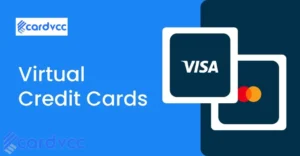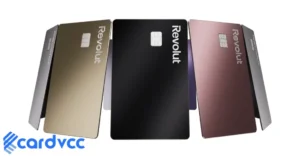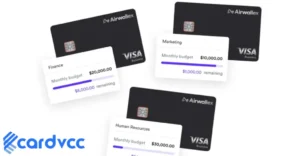To dispute a Chase debit card charge, contact Chase customer service immediately. Provide details of the charge and any supporting documentation.

Disputing a charge on your Chase debit card can be a straightforward process if you act promptly. Whether you notice an unauthorized transaction or a billing error, addressing the issue quickly is crucial. Chase offers several convenient ways to initiate a dispute, including via phone, online banking, or visiting a branch.
Gathering all relevant information, such as transaction details and any supporting documentation, will help expedite the resolution process. Understanding your rights and responsibilities as a cardholder can also make the experience smoother. Stay vigilant with your account activity to ensure any discrepancies are resolved efficiently.
Identifying Unauthorized Charges
Spotting unauthorized charges on your Chase debit card is crucial. It helps prevent financial loss. Being proactive is key. You must know the common signs and review your statements regularly.
Common Signs
Recognizing unauthorized charges early can save you. Here are some common signs:
- Unfamiliar transactions
- Duplicate charges
- Small test charges
- Large unexpected purchases
- Transactions from unknown locations
Reviewing Your Statements
Regularly reviewing your statements is essential. Follow these steps:
- Log into your Chase account
- Navigate to the ‘Statements’ section
- Check each transaction carefully
- Highlight unfamiliar charges
- Contact Chase immediately if you find any
Use a table to track your findings:
| Date | Transaction | Amount | Notes |
|---|---|---|---|
| 01/10/2023 | Unknown Store | $50 | Not recognized |
| 02/10/2023 | Duplicate Charge | $100 | Reported |
Preparing To Dispute
Disputing a charge on your Chase debit card can be simple. Prepare well before starting the dispute process. This helps in quick resolution.
Gathering Evidence
Gathering evidence is the first step in disputing a charge. You need strong evidence to support your claim.
- Collect receipts related to the charge.
- Take screenshots of any online transactions.
- Save emails from merchants.
Make sure all evidence is clear and easy to read. This strengthens your case.
Documenting The Charge
Documenting the charge is equally important. Keep a detailed record of the charge.
| Detail | Example |
|---|---|
| Date of Charge | Jan 1, 2023 |
| Amount | $50.00 |
| Merchant Name | ABC Store |
| Description | Unauthorized purchase |
Write down all details in a notebook or a document. This helps you remember all facts during the dispute process.
Initiating The Dispute
Sometimes, you might see a charge on your Chase debit card that you don’t recognize. Initiating a dispute is essential. This step ensures you get your money back.
Here are the steps you need to take to start the dispute process.
Contacting Chase Customer Service
First, you need to contact Chase Customer Service. This can be done via phone. Dial the number on the back of your card. Explain the charge you want to dispute.
Provide details like the transaction date and amount. The customer service representative will guide you. They may ask for more information. Be ready to answer their questions.
Keep a pen and paper handy. Write down the case number they give you. This will help you track your dispute.
Filing An Online Dispute
You can also file a dispute online. Go to the Chase website. Log in to your account.
Navigate to the “Account Activity” section. Locate the charge you want to dispute. Click on it and select “Dispute Transaction”.
Follow the prompts. Enter the required information. This includes the reason for the dispute. Once you submit it, Chase will review your case.
Check your email for updates. Chase will notify you about the status of your dispute.
Follow-up Actions
After disputing a Chase debit card charge, taking follow-up actions is crucial. These steps help ensure your dispute gets resolved quickly and accurately.
Tracking Your Dispute
First, always track your dispute status. You can do this easily via the Chase mobile app or website. Log in and navigate to the “Disputes” section. Here, you’ll see the current status and any updates.
Make note of any important dates or changes. Keeping a record helps you stay organized and prepared.
Responding To Requests
Chase may ask for additional information during the dispute process. Respond quickly to these requests. Timely responses help speed up the investigation.
Gather this information in advance to save time. Keep everything in a dedicated folder on your computer.
If Chase contacts you by phone or email, answer promptly. Quick responses show your commitment to resolving the issue.
By following these steps, you can ensure your dispute is handled efficiently.

Do Virtual Credit Cards Provide Robust Protection Against Scams?
In today’s world, online shopping is very common. But with it comes the risk of scams. How can we shop safely? One way is to use virtual credit cards.
What Are Virtual Credit Cards?
Virtual credit cards are not physical cards. They are digital versions of your real credit card. You can use them for online purchases. They have unique numbers and expiration dates.
How Do Virtual Credit Cards Work?
When you want to buy something online, you generate a virtual card. This card has a unique number. You enter this number instead of your real credit card number. The merchant sees only the virtual card number.
Benefits of Virtual Credit Cards
Virtual credit cards have many benefits. Here are some of them:
- Enhanced Security: Virtual cards protect your real card number.
- Limited Use: They can be used only once or for a short time.
- Control Over Spending: You can set a spending limit on each virtual card.
- Easy to Create: You can create them instantly through services like Cardvcc.
Enhanced Security
When you use a virtual card, your real card number stays safe. Even if a scammer gets the virtual card number, they can’t use it for long. The virtual card number is temporary. This makes it hard for scammers to steal your money.
Limited Use
Virtual cards can be used only once or for a short time. This limits the chances of fraud. If a scammer tries to use the virtual card number later, it won’t work. The number has already expired.
Control Over Spending
You can set a spending limit on each virtual card. This means you can control how much money can be spent. If a scammer tries to spend more, the transaction will be declined.
Easy to Create
Creating a virtual card is easy. Services like Cardvcc let you create virtual cards instantly. You don’t have to wait for days to get a physical card. You can start using the virtual card right away.
How to Join Cardvcc
Joining Cardvcc is simple. Follow these steps:
- Visit the Cardvcc website at cardvcc.com.
- Sign up for an account.
- Verify your email address.
- Create your first virtual credit card.
Are Virtual Credit Cards Foolproof?
No system is 100% foolproof. However virtual credit cards offer strong protection. They reduce the risk of scams. They make it hard for scammers to steal your money.
Tips for Using Virtual Credit Cards Safely
Here are some tips to use virtual credit cards safely:
- Use Reputable Services: Choose services like Cardvcc for creating virtual cards.
- Keep Your Information Private: Do not share your virtual card details with anyone.
- Monitor Your Transactions: Regularly check your account for any suspicious activity.
- Set Spending Limits: Always set a spending limit on each virtual card.
Virtual credit cards provide robust protection against scams. They keep your real card number safe. They limit the chances of fraud. They offer control over spending. And they are easy to create. By using virtual credit cards, you can shop online with peace of mind.
Join Cardvcc today and start creating virtual credit cards instantly. Stay safe and enjoy your online shopping experience!
Understanding Chase’s Investigation Process
Disputing a Chase debit card charge can be confusing. It is crucial to understand Chase’s investigation process. This helps you know what to expect and how to prepare. Here’s a detailed look at the key steps involved.
Timeline
The investigation process follows a specific timeline. Once you report a dispute, Chase starts the investigation within 1-2 business days. They may contact you for more information. This could include receipts, emails, or other documents.
After gathering all required information, Chase has up to 10 business days to complete their initial investigation. If they need more time, they may take up to 45 calendar days. During this period, the disputed amount is usually credited back to your account temporarily.
Possible Outcomes
Once the investigation is complete, Chase will notify you of the outcome. There are three possible outcomes:
- Charge Reversal: The disputed charge is removed permanently. You keep the temporary credit.
- Charge Validated: The charge is found to be valid. The temporary credit is removed from your account.
- Partial Resolution: Only a portion of the charge is reversed. The remaining amount stays in your account.
If the outcome is not in your favor, you can still request further review. Chase may provide additional details to explain their decision.
| Step | Action | Timeframe |
|---|---|---|
| 1 | Report the dispute | 1-2 business days |
| 2 | Initial investigation | 10 business days |
| 3 | Extended investigation | Up to 45 calendar days |
| 4 | Outcome notification | Varies |
Tips For Preventing Future Disputes
Disputing a Chase debit card charge can be stressful. Preventing future disputes is essential. Follow these tips to keep your account secure and avoid issues.
Monitoring Your Account
Regularly checking your account is crucial. Log in at least once a week. Look for any unfamiliar transactions.
If you spot an issue, report it immediately. Early detection can prevent bigger problems. This habit ensures your account stays safe.
| Frequency | Action |
|---|---|
| Daily | Check recent transactions |
| Weekly | Review all account activity |
| Monthly | Verify statements for errors |
Using Alerts
Set up alerts to monitor your account activity. Alerts notify you about unusual transactions. This helps in detecting fraud early.
Chase offers various alert options. You can receive alerts via email or text messages. Customize alerts based on your needs.
- Balance Alerts: Know when your balance drops below a set amount.
- Transaction Alerts: Get notified of large or out-of-state purchases.
- Payment Alerts: Receive reminders for upcoming payments.
Using alerts keeps you informed. It helps in maintaining control over your account.
Additional Resources
When disputing a Chase debit card charge, additional resources can help. These resources provide further assistance and guidance. Below are some key resources.
Chase Support
Chase offers various support options for disputes. Contacting Chase customer service is a good first step. Here are some ways to reach them:
- Phone: Call the number on the back of your debit card.
- Online: Use the secure message center in your Chase account.
- In-Person: Visit a local Chase branch for direct assistance.
Chase also provides a detailed guide on their website. This guide explains the dispute process step-by-step. Make sure to have all necessary documents ready. This includes receipts and transaction details.
Consumer Protection Agencies
Several agencies can help with disputes. They ensure fair practices and consumer rights. Here are some important ones:
| Agency | Contact Information |
|---|---|
| Federal Trade Commission (FTC) | Website: www.ftc.gov |
| Consumer Financial Protection Bureau (CFPB) | Website: www.consumerfinance.gov |
| Better Business Bureau (BBB) | Website: www.bbb.org |
These agencies can provide valuable information. They offer tools to file complaints. They also help resolve disputes efficiently.

Frequently Asked Questions
Can I Dispute A Charge On My Chase Debit Card?
Yes, you can dispute a charge on your Chase debit card. Contact Chase customer service or use the mobile app to start the process.
Can I Dispute A Charge I Made On My Debit Card?
Yes, you can dispute a charge on your debit card. Contact your bank immediately to start the process.
Is Chase Good About Disputing Charges?
Yes, Chase is reliable for disputing charges. They offer a straightforward dispute process and provide timely updates.
Can I Dispute A Subscription Charge Chase?
Yes, you can dispute a subscription charge with Chase. Contact their customer service or use the Chase mobile app.
Conclusion
Disputing a Chase debit card charge can be straightforward and stress-free. Follow the outlined steps for a smooth process. Always monitor your account regularly to catch unauthorized transactions early. Stay proactive and informed to protect your finances effectively. Contact Chase support for any additional assistance or questions.
Read More- 10 Best Virtual Credit Card Apps In USA







